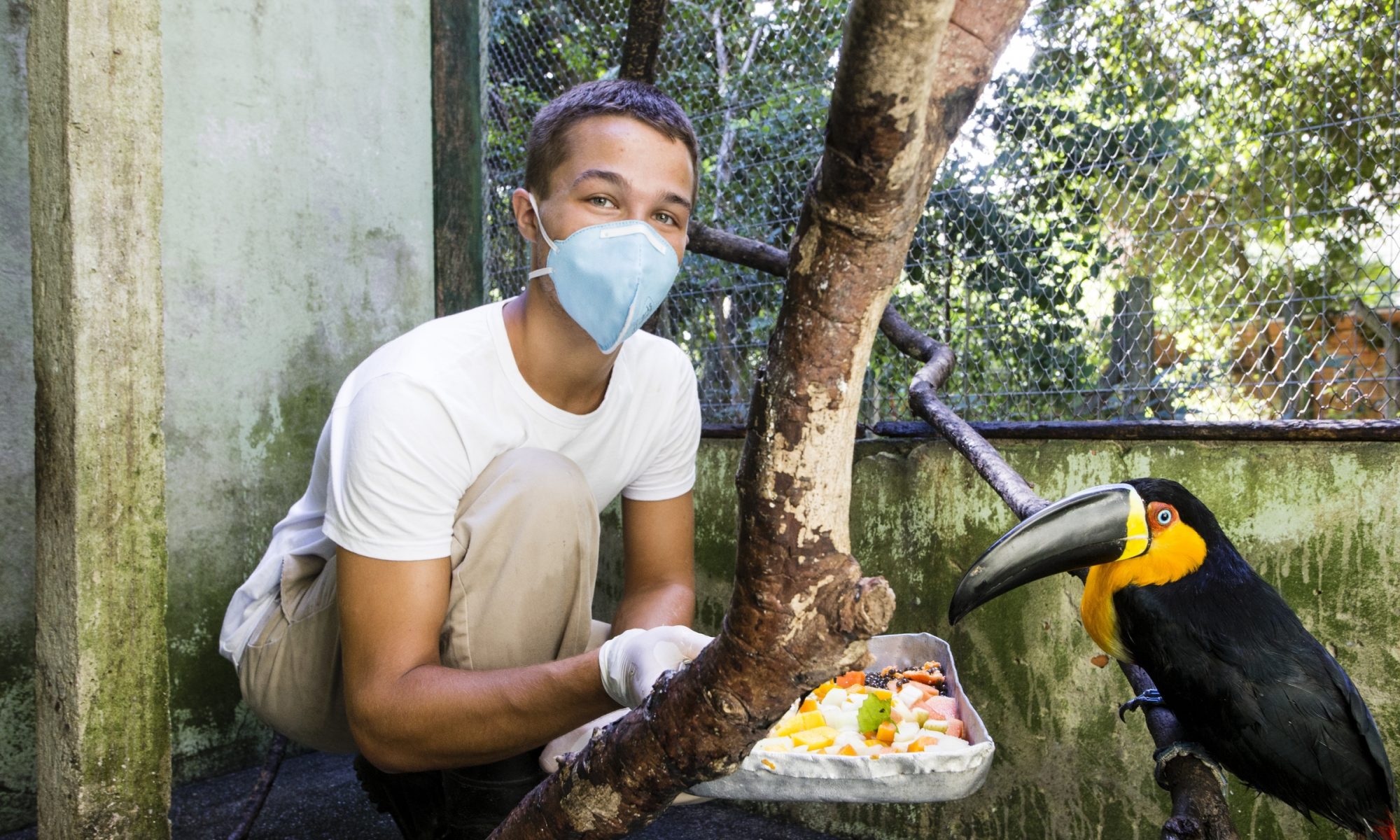A recap by Abi, Tufts Civic Semester Participant
Curling Up and Flying Away
by Roger, Tufts 1+4 Participant
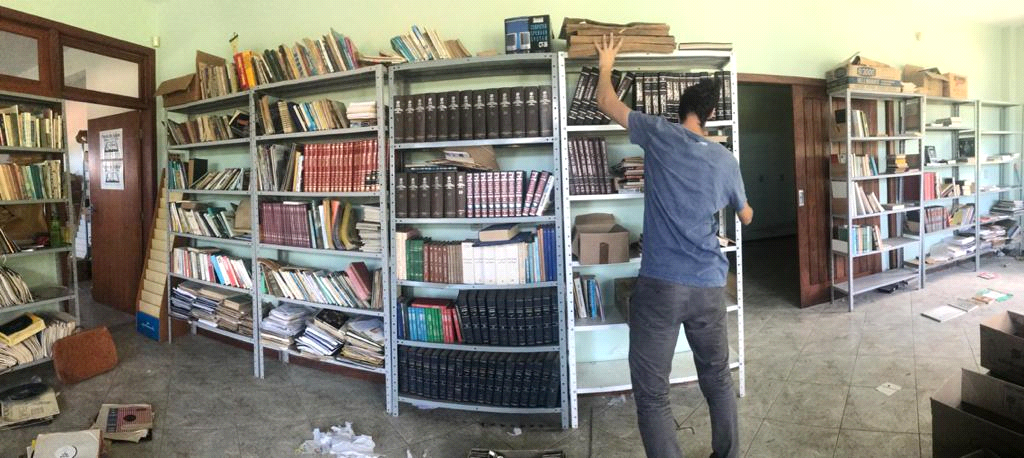
As each Fellow moves through their journey, they’re confronted by a slew of day-to-day encounters and oddities, each tucked away as a memory-a portion of the physical voyage we’re on our ways through. A gorgeous bunch of natural flowers with unfamiliar scents, particularly haggle-y street vendor in an open-air bazaar, or a spontaneous and joyful dance on the streets at Carnaval have all added to each of our unique experiences and given us new recollections on which to draw to re-access our emotions during this year. (I have found that writing these experiences down has been particularly helpful in doing this, as merely reading the words can teleport me backwards into the middle of any of the rich days I’ve lived.)
All of these memories are being created within this space abroad, outside of the home and the comfort zone. Thus, it seems almost strange (and even selfish) to desire a further level of self-transportation. I mean this in the form of stories, of books. Having read more than the other Fellows this year by a significant margin, I’ve been asked time an time again why I would choose to spend my valuable time in a foreign environment seeking to enter another one though printed pages, by both peers here and back home. It certainly is a valid point: You can always read, but you can’t always be on the beach in Brazil. Though I had come in to this year with the goal of reading as much as possible (to recoup for time lost during high school), I began to internalize this, and my practices changed. As the number of inquiries of my habit rose, I began to read less and less. And though I knew this was ‘the best use of my time,’ I was keenly aware that I was doing this more to please others than myself, and my days, though fuller of uniquely-foreign experiences, were notably dryer and less memorable.
It was not until I heard the words of wisdom from (who else?) a Brazilian librarian that I was able to find closure in this internal conflict. As I laid out the “why read at home when you could be on a Brazilian beach” conundrum, she simply laughed and said, “Why not read on a Brazilian beach? It’s for certain you can’t do that in the States…” and it clicked.
This is no new realization-thinkers before me have come up with it, and many after will, as well-but I am glad I’ve come to it in my own, on my own time. That’s what this year is for, hmm? Having heard her words and reflected on the duality of my outdoorsy Brazilian year and my private one passed between the pages of what has now added up to twenty-four books, I’ve realized that that the environment in which a book is read can and does so, so deeply affect my as a reader’s experience, and that some of the most profound memories I hold were built directly upon this confluence. I recall with soulful fondness my enjoyment of Californian Cannery Row while swinging in a hammock on a cloudless, dusty Brazilian day, of my laughter at Waiting for Godot as I sat in a bus terminal, knowing that my bus would never come, of my tearful joy at the love found in the last pages of The Teahouse Fire as I realized a love of my own. Yes, of course I will reflect with gratitude on the experiences and relationships formed independent of the themes of whatever I happened to be reading at the time. They far outnumber those for which I found true, meaningful overlap. But those that did-these are the ones by which are made not only memories, but blossoms of growth of the soul.
(That last bit was going to be the end of this. But after a tumultuous flight from our host countries followed by an utterly positive moment that made all of my reading in Brazil worth it, I felt it could be prudent to share this last thought.)
Back at home, a month before expected, and my heart and eyes are still in Brazil. I feel a deep sense of longing to simply be there, for my body and my ego to be in the same place. I will walk outside in a tee shirt, forgetting the new necessity to survive rather than thrive in the outdoors, and stubbornly stand, freezing, for a few minutes, wishing the tropics to return. I say “Please” and “Thank You” and “Excuse Me” in Portuguese when talking on the phone, and have to give an, “oops! My bad…” And of course Brazilian hugs (or any hugs, for that matter) are deeply and presently missing.
But I can still get back. Open Captains of the Sands, and the beach is there, washing over me. There is a portal inside some of my books now; they cannot be read without a journey backwards, towards the hurt-so-good past. And for that, I would do it again in an instant.
Gandhi Jayanti Day
by Alex, Tufts 1+4 Participant
The Indus Valley Civilization and the fierce Mughals have pulled me to India. In high school, I consistently found myself being drawn into my world history textbook every time India was mentioned. I particularly enjoyed learning about Mahatma Gandhi and admired how instead of using force, he had inspired Indians to liberate themselves from the British colonialists using non-violence. Later on, this same philosophy would be used to spark freedom movements across the world, from the end of the Apartheid to the Civil Rights Movement. The earth was a better place because Gandhi had walked it.
Due to my love for Indian history, I was excited to find out October 2nd, Gandhi’s birthday, was a national holiday known as Gandhi Jayanti Day. Since government schools spend the day commemorating him, I would luckily be able to celebrate his 150th birthday alongside my students.
At school that morning, teachers handed out posters with slogans such as “Reduce, Reuse, Recycle” and “Clean and Green is Our Dream” to our students, directing them to form a line outside of the school building. Excited, I quickly joined them, and we walked around our school’s neighborhood, chanting “Clean Pune, Green Pune,” alongside some of the neighboring schools. Many people stopped on the street to cheer us on or stare blankly at the commotion. After an hour, we returned to school and sang happy birthday to a picture of Gandhi while eating sweets. My kids were smiling, and I was happy that by raising awareness on pollution, something Gandhi would have strong opinions on, we had done something meaningful. Participating in peaceful protests meant keeping Gandhi’s legacy alive.
Energized by the morning’s events, I didn’t want the celebrations to end after I got home. On Martin Luther King Jr. Day, an American holiday similarly celebrating a man who devoted his life fighting for equality, my family and I read from some of his works. I was especially surprised that my talkative host father wasn’t making a bigger deal of the holiday. When I approached him about it, he looked me in the eye and told me he believed, to some extent, that Gandhi had left a mess for India. The shock evident on my face, he explained that Gandhi consented to the partition of Pakistan and India. If Gandhi had opposed more vocally, which he had the power to do, my host father and many others think the issues involving Pakistan and India would be lessened. He continued by saying that Gandhi often receives all the credit for independence, but the battle he began in the early 1900s wasn’t over until 1947. In reality, victory came because Britain was weak after both world wars and could not afford to fight for India.
Although I had only known my host father for less than a month, I cared greatly about his opinions. I enjoyed learning from him during our many conversations about politics and values. While initially confused, I later realized that this conversation with my host father broadened my views about a man whom I had been groomed to treat as an untouchable figure. They contrasted a morning solely full of festivities. As a result, Gandhi Jayanti Day forced me to challenge my preconceived assumptions. I had been comfortable with my knowledge of India’s fight for freedom from school and my own research that I hadn’t opened myself up enough to hearing more from locals. While I still admire Gandhi in many ways, I have taken the initiative to learn more this year by questioning in order to better immerse myself.
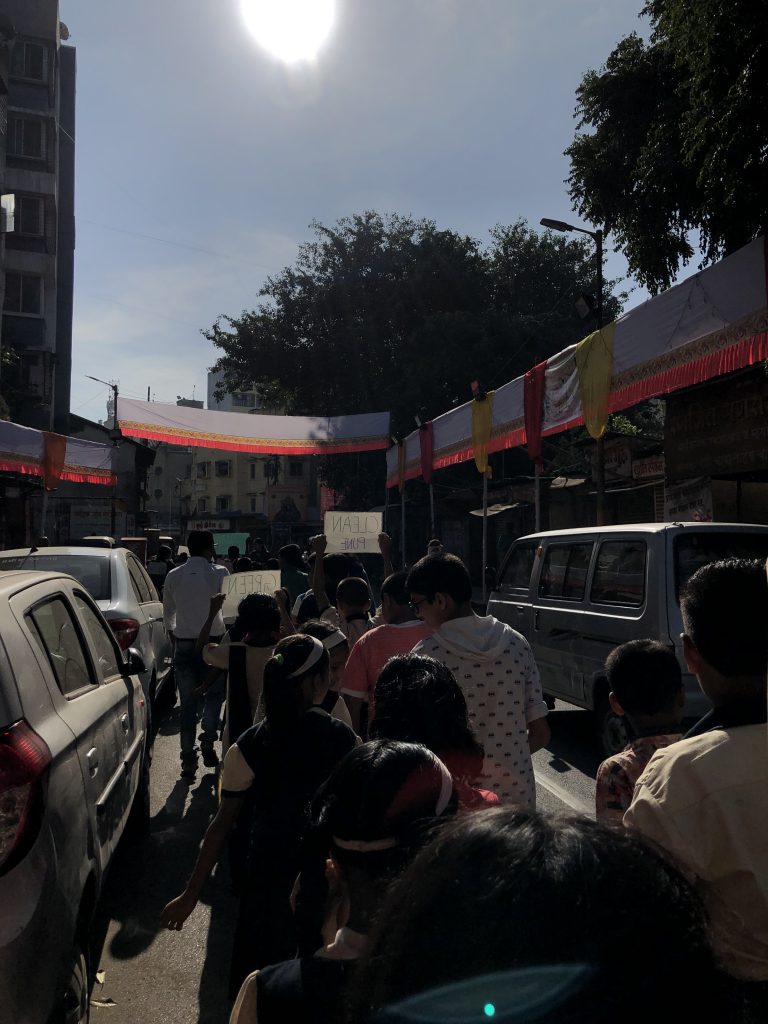
Success is Made of Small Victories
by Silas, Tufts 1+4 Participant
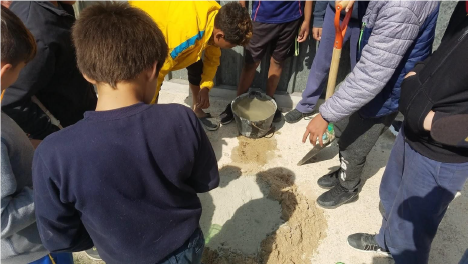
In a new place, I find myself fixating on even the littlest events as wins or losses. Noting a small victory is the most encouraging part of life here, no matter how small. Redefining my idea of success was a source of the never ending culture shock of this unfamiliar place. I arrived with big goals of understanding all the bus lines, having long, in-depth conversations with my host parents, or helping a kid with their math homework at my internship. A month in and I still use apps on most commutes, I bumble awkwardly through conversations, and I’m lucky if a kid wants to listen to me. But I have found motivation in the smaller wins while building towards my previous goals.
Usually they are events that I would not have even noticed back home, such as a simple conversation with a kid at my internship. On a beautiful Saturday, I found myself sitting on the sidelines of the kids’ soccer practice. I could not see my skills matching up to the young Uruguayans so I chose not to participate. One of the fifth graders, Tomás, joined me sitting on the stoop and started asking me about my pets. As I told him stories of my dog, George, of his hatred of mailmen, his fear of other dogs, and his unusual preferred treats, I noticed I was not having to plan out what I said, as I usually must with Spanish. Lucas loved it and then loved telling me about the strained relationship between his cat and his dog. Though the conversation lasted just a couple of minutes, I continue to think about it, a testament to how powerful these small victories can be.
Not a day goes by without small defeats, too. Similarly, usually they are things I would not have noticed back home but here, they amplify the general feeling of being a foreigner. Not understanding the layout of a grocery store and then not knowing how to say the ingredient I’m looking for, the interactions made awkward by my repeating of “¿Qué?”, or when the person I’m talking to must ask, “¿Qué?” because of my accent. When these build up, it can be demoralizing,making personal progress feel stagnant. However, it’s important to recognize these as a natural part of life here so they do not cause actual stagnation. Instead, I choose to focus on the absence of small defeats. In my first week, they seemed to far outweigh the small victories but as time has gone on, they inevitably have grown less and less frequent. For example, when Uruguayans ask, “¿Qué hora es?” (“What time is it?”), they blend all the sounds so it comes out as one syllable. This led to me having to ask them to repeat it every time until I began to learn and now I no longer experience this small defeat.
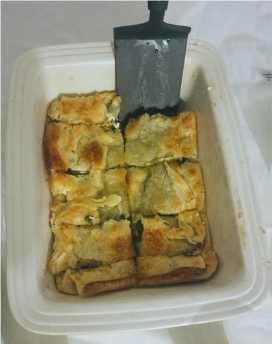
My time in Uruguay in the end may be defined by big successes such as becoming fluent in Spanish, making meaningful friendships, or completing a long term project at my internship. But until I am able to look back on it all, my time is defined by finally mastering the secret handshake my students taught me.
The Pizza
by Christopher, Tufts 1+4 Participant
As Christmas of my bridge year approached, I wasn’t in the Christmas spirit at all. For the first time, I wasn’t going to be with my family on Christmas. I briefly fantasized that my family would surprise me with a Christmas visit, but I knew that wasn’t really going to happen: they were on the other side of the world, in Japan. During Christmas Eve festivities, I went with my host family to a relative’s house for a big gathering. I didn’t feel festive. I felt very stressed. My heart beat in a weird way. All the cordial greetings and the Spanish conversations didn’t satisfy me. I really wanted to go home.
On Christmas morning, instead of going to another large family gathering, I said that I wasn’t feeling well. I really wasn’t. But this wasn’t the flu or a cold or food poisoning. I felt so anxious, so alone. I stayed in my room for the entire day and my host family for some reason locked the house from the outside, so I couldn’t leave for a walk. I was stuck. It’s interesting to me, looking back, that in the time of most loneliness, I chose to stay by myself. I didn’t go with my host family. I rolled around in my bed, opened my computer and then shut it and took a nap, and paced around the house. At one point, I just felt like a mouse stuck in side a cage. I started crying. Why couldn’t I be with my real family? Why can’t I be with them, eating Sushi, playing with the dog, or opening presents? Leading up to the Christmas festivities in Cuenca, I tried to have a really positive mindset, suppressing what I really felt. And my real emotions just came out. It felt good. It felt so good. I was sad but I wasn’t faking what I really felt.
As dinner came around, I sluggishly walked down to the dinner table. At that point, I was just tired of crying. I was so happy to see my host family after they came back from the family gathering at around 6pm. They brought one box of pizza for the four of us, and my host mom served me slices of Hawaiian and another mixed pizza. I took a bite out of the first slice, and I was overcome with a sensation of gratitude. My heartbeat was feeling off, I was lonely for the whole day, and the seemingly normal pizza tasted like the best food I’d had in a while. Every piece of pineapple, every piece of ham, and every ingredient seemed like nuggets of joy to me. We savored every slice of the pizza, swallowing it with the yellow Ecuadorian “Cola.” The warm ambiance that I felt with having loving company around a box of pizza seemed to warm up my very cold and lonely day.
The moment I returned my mind back to Cuenca, Ecuador instead of Tokyo, Japan, it seemed like everything was improving. Yes, I was stuck; however, there was a lesson to be learned here. If I went to college, where I have two siblings in the same city, and would have been in an environment where I can go back to Japan for Christmas, I would have relied on external pleasures like fancy food or family members to take my mind off for the time being. However, this year, I was forced to lean towards myself. There wasn’t anyone else, literally. I was stuck in the house for Christmas. So I learned to be real with my emotions and listen to what I am really feeling inside of me. I accepted the raw emotions as it is. These are the moments when I appreciate that I came to Ecuador.

The Modern Architecture Pandemic
By Cher, Tufts 1+4 Participant

Standing upon a simple yet elegant mansion, I was awed when I first saw how architects were able to transform white walls and wide pane glasses into such an aesthetic building. Walking through the rows of mansions by the lake, I always admired the modern houses the most. I admired how architects are able to turn such a simple shape like boxes and triangular prisms using the colors of whites, grays, and black to establish grand and beautiful houses. To me, these homes represent wealth, elegance, and power. As an immigrant, these qualities are part of the dream that my family and many other families had dreamt of when sacrificing our blood and sweat. To live in such a house meant that you worked hard to get there.

As my host brother walked me through the traditional houses and the shops, we came to a halt at a big intersection. At first glance, I noticed all the sleek and beautiful modern houses across the road. This road is where the vacation homes for the rich intersect with the homes of the people whose ancestors have lived here long before it became a destination for tourists. I admired how beautiful they were, but questions popped up in my head. Why do these beautiful houses feel so out of place? What was here before them? As I explored my new home, I noticed that these houses were by the beaches, on top of mountains, and in perfect places for houses to be located with amazing views. Everywhere I go, there is always a white boxed house with beautiful details. They all begin to look the same to me. A house that I used to admire so much now became so common, basic, and identity-less.

Modernist architect designs became popular after world war two. It was a form of design to embrace the beauty of simplicity, function, and rationality that utilized the new materials and advanced technology. These modern designs reject old, traditional, historical ideas and styles, and ornamentation. These designs were meant to improve the standard of living for all by using industrial ideals.

The inspirations drawn by modernist architecture is to make the home more functional, rational, and improve the quality of living. When you look closely to those who live in these houses and how big they are, you begin to question these intentions. The people who live in these types of houses already have access to wealth and a great quality of life. The homes that are made in this style takes up so much space for usually a family of four. Due to the fact that this style rejects the old, traditional, and historical ideas, it looks out of place, especially when it is planted in a city that has a lot of historical context such as Florianópolis. In my perspective, these houses fail to appreciate the culture and historical context of where they are built. The style is so different from those before it that it seems as if they don’t want to acknowledge the history of the land. The intention of the modernist design is to improve the home for people throughout the world, but the impact doesn’t correlate with the intention. This is because only those with access to wealth have access to this design, because it takes up more room than it needs, and it is a clear display of wealth and power. The modernist home design is a beautiful design that has great intentions to improve society, but fails to deliver the impact.
I appreciate these homes for their intention and beauty, but after seeing what the impacts are, I am beginning to question that appreciation. Architectures are a great part of history and culture of a location. When you implant something so different and it doesn’t relate to the culture, like modernist architecture, it seems as though the culture and history of that location was not acknowledged, creating ignorance and division between the new and the old.
Sources:
Larkin, Maggie. “A Brief History of Modern Architecture and Design.” Daily News, The Associated Newspapers of Ceylon Ltd., 22 July 2013, http://www.dailynews.lk/2013/07/22/features/brief-history-modern-architecture-and-design.
